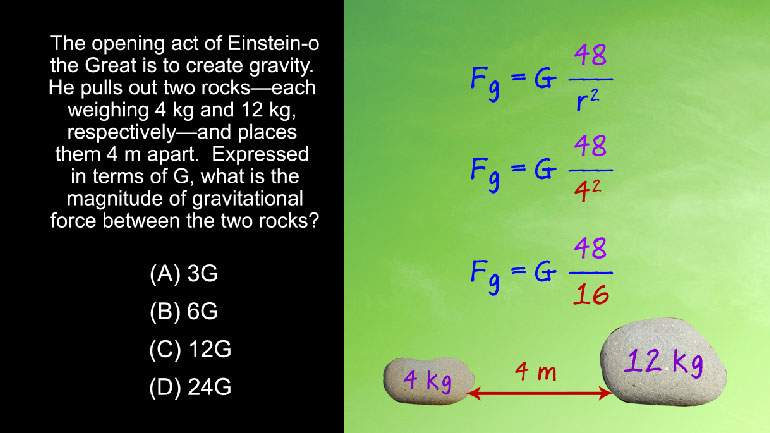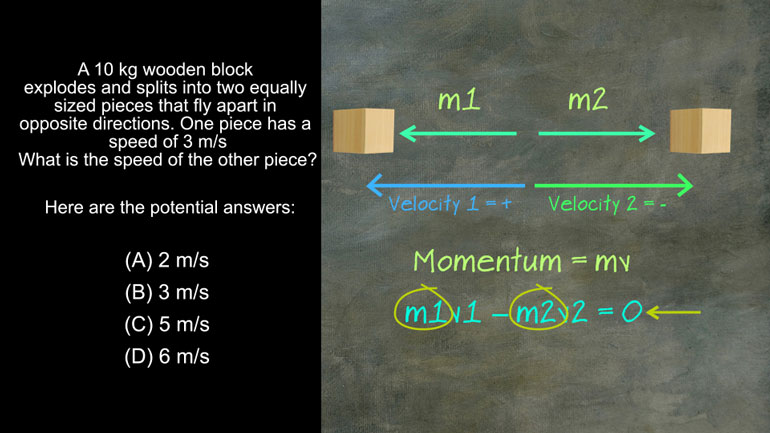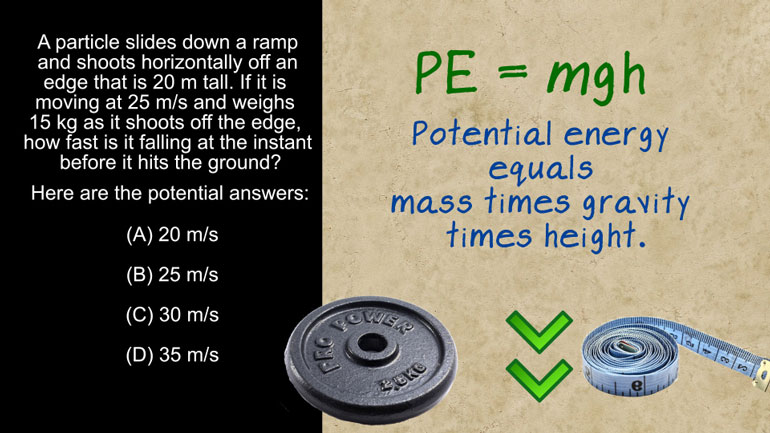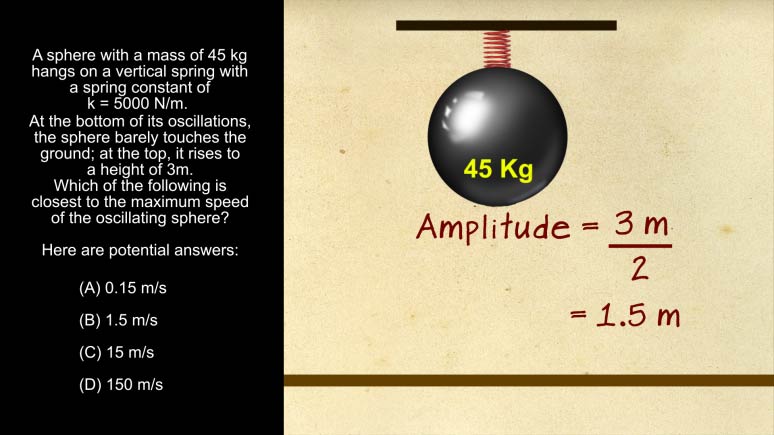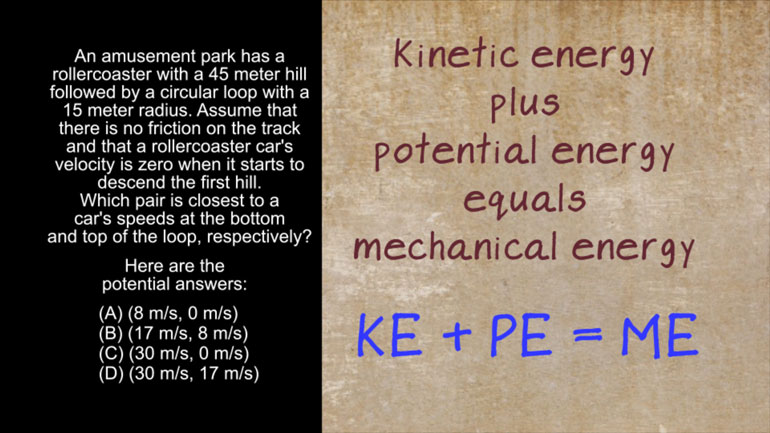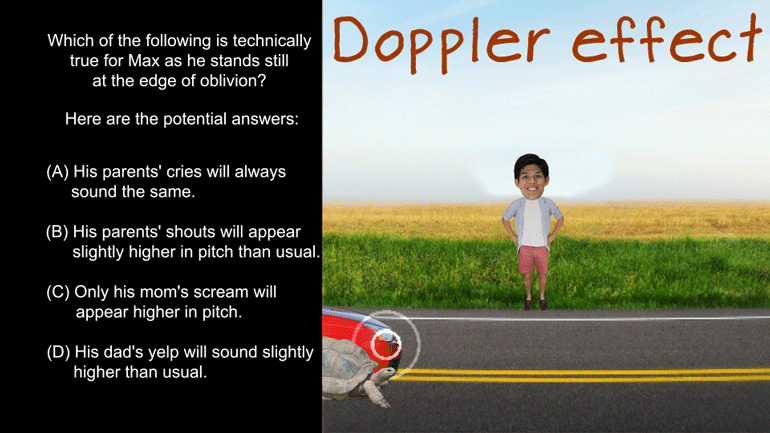ShmoopTube
Where Monty Python meets your 10th grade teacher.
Search Thousands of Shmoop Videos
Using math appropriately Videos 10 videos
You may not be able to get Einstein-o the Great at your next birthday party, but you can at least figure out his tricks. Let's find out what the ma...
If there's one good thing about the heat death of the universe, it's that we'll all have an excellent excuse for dodging physics homework.
The real moral of the story here is just "don't get in the way of elephants or tigers." That is not the kind of kinetic energy you want to absorb.
AP Physics 1: 2.3 Changes and Conservation Laws 203 Views
Share It!
Description:
AP Physics 1: 2.3 Changes and Conservation Laws. Which of the following is closest to the maximum speed of the oscillating sphere?
More Video DetailsTranscript
- 00:00
Thank you We sneak and here's your smoke du jour
- 00:05
brought to you by springs it's Important understand how springs
- 00:08
work in terms of physics it's also important to understand
- 00:11
how springs work in terms of comedy Well a sphere
- 00:15
with a massive forty five kilograms hangs on a vertical
Full Transcript
- 00:17
spring With the spring constant k equals five thousand meters
- 00:22
at the bottom of its oscillations up announcing the sphere
- 00:26
barely touches the ground at the top It rises to
- 00:29
a height of three meters which of the following is
- 00:32
closest to the maximum speed of the oscillating sphere And
- 00:36
here the potential answers Anything that one all right well
- 00:41
before we really get into this don't get hung up
- 00:43
on the idea that this spring is hanging from the
- 00:45
ceiling What we did there don't get hung up on
- 00:48
never mind Anyway it affects the equilibrium point But for
- 00:51
this question that doesn't come into play With that out
- 00:56
of the way let's think about how the energy in
- 00:58
this system works Well when this spring is moving at
- 01:01
full speed all the energy and the system is kinetic
- 01:04
energy The equation for that is one half mass times
- 01:09
velocity squared Now at the moment of maximum displacement when
- 01:13
the sphere is that it's very highest and very lowest
- 01:17
point the sphere is actually not moving just for a
- 01:20
blink of an eye The energy is all stored his
- 01:22
potential energy Then the spring gets back to spring it
- 01:25
again and the kinetic energy comes back into play Going
- 01:28
going going So what That instant when the sphere isn't
- 01:31
moving all of the energy and the system is elastic
- 01:34
potential energy Well to calculate that we find the product
- 01:39
of one half the spring constant jonas k in our
- 01:43
little equation here times the amplitude squared Well that equation
- 01:47
looks like this and you stands in for elastic potential
- 01:50
energy Because it's just easier to type you know and
- 01:53
amplitude is the maximum displacement from the equilibrium point of
- 01:57
the spring In this case since the bottom of the
- 02:00
oscillation around level and the top of the oscillation is
- 02:03
three meters Will The amplitude is half of that or
- 02:06
one point five meters using advanced calculus Now we know
- 02:09
that in a system mechanical energy equals potential energy plus
- 02:13
kinetic energy And we also know that the total energy
- 02:17
in this system can't change unless something else acts on
- 02:20
it So the mechanical energy when all the energy is
- 02:23
potential is the same as when all of the energy
- 02:26
is kinetic Or to put it another way the maximum
- 02:30
kinetic energy of this system is equal to its maximum
- 02:33
potential energy Got it good And that means that the
- 02:38
two equations we looked at earlier have to equal each
- 02:40
other So you sometimes all this physics makes us feel
- 02:44
like our head is on a spring Now we can
- 02:46
plug in numbers and sol for velocity after we do
- 02:50
a little bit algebra With that we see that velocity
- 02:53
equals amplitude times the square root of a spring constant
- 02:57
over mass that's one point five meters times the square
- 03:01
root of five thousand newton meters divided by forty five
- 03:04
kilograms which is about the same as one point five
- 03:06
meters times the square root of one Hundred over one
- 03:10
second squared giving us an answer of fifteen meters per
- 03:14
second So the answer Isi This is another case where
- 03:19
understanding the relationship between kinetic energy potential energy and mechanical
- 03:23
energy is the key to finding the right answer So
- 03:25
we have to make sure to study these forms of
- 03:27
energy And we know it's hard work studying so feel
- 03:30
free to take a snack break anytime you want Want 00:03:32.373 --> [endTime] some jelly beans will you
Related Videos
AP Physics 1: 2.5 Changes and Conservation Law. At what point(s) in this situation is energy lost in any form?
AP Physics 1: 1.4 Changes and Conservation Laws. Find the current across R2.
AP Physics 1: 2.4 Changes and Conservation Laws. Which of the following circuits should the students use?
AP Physics 1: 1.4 Waves. Which of the following is technically true for Max as he stands at the edge of oblivion?
AP Physics 1: 1.5 Waves. What can possibly occur when the two waves reach each other?
